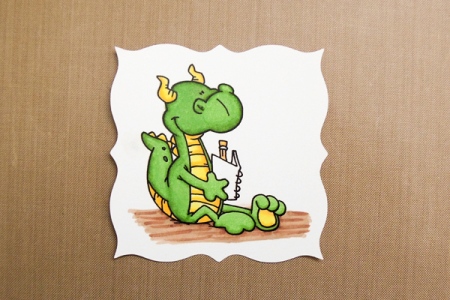Have you ever wanted to cut out an image that is either already printed or stamped? What about cutting photos? Here is how you can do that with eCAL or SCAL3. This would probably work with any program that has the print and cut ability. I used a transparency, but you could use vellum or even office paper and a light box (or window).
- Open your file in eCAL/SCAL and size to the size that you want to cut. I also change my cut shape to no fill and add a stroke. Print with registration marks. If I’m printing the same cut file in different sizes, I put each size on a new page and label the pages with the dimensions.

- I have been printing one shape, and then turning the transparency around to print another shape on the other end. I also write the file name and the shape size next to each shape.

- Place the printout over a piercing mat (or a mouse pad) and poke all three of the dots in the center of the registration marks.

- Place your template over the image you want to cut. The transparency make it very easy to position (and also to avoid the stray marker near the edge of the image
 ).
).

- Use a pen or a marker and place a dot in each of the three registration marks. I like to number them, but that really isn’t necessary.

- Position the print on the mat. Placement doesn’t need to be exact. Just make sure that it isn’t turned sideways. Click on the Print2Cut button and go through the Print2Cut steps like normal.

- The results: One previously printed image that has been cut out exactly like I wanted.





 Posted by HeatherM
Posted by HeatherM 








